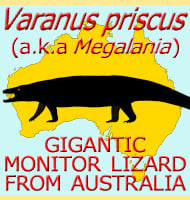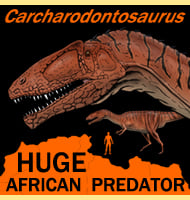Varanus priscus (a.k.a. Megalania)
The giant goanna For roughly one hundred and fifty years Varanus priscus went by the name of Megalania prisca, however modern interpretations of this ancient lizard mostly concur that it is actually a species of the current Varanus genus of monitor lizards that we know today. Because it has appeared in many books, websites and … Read more

